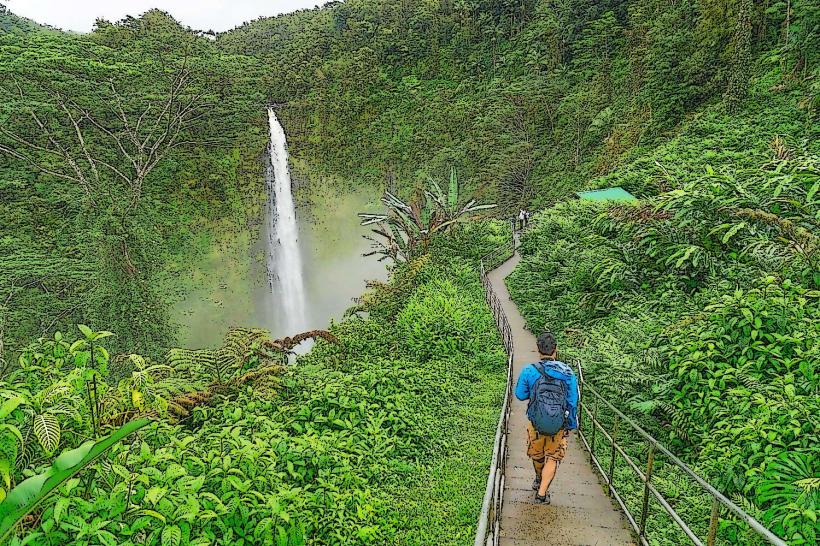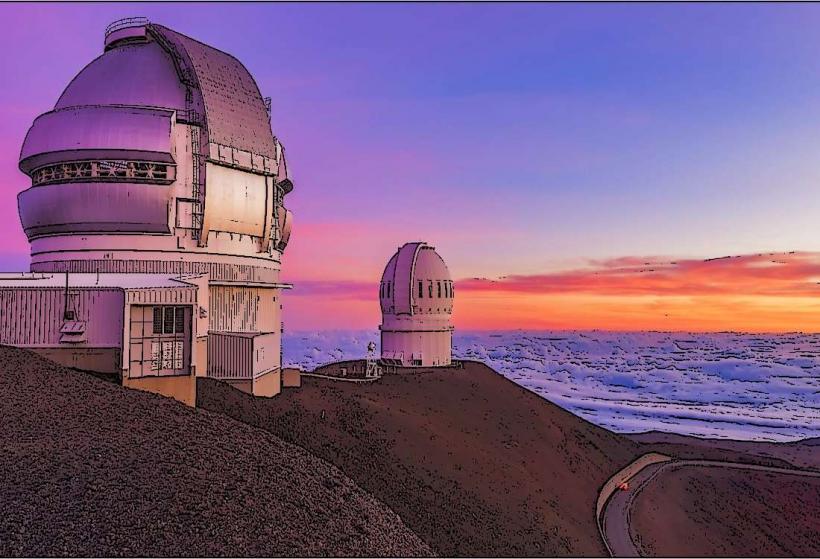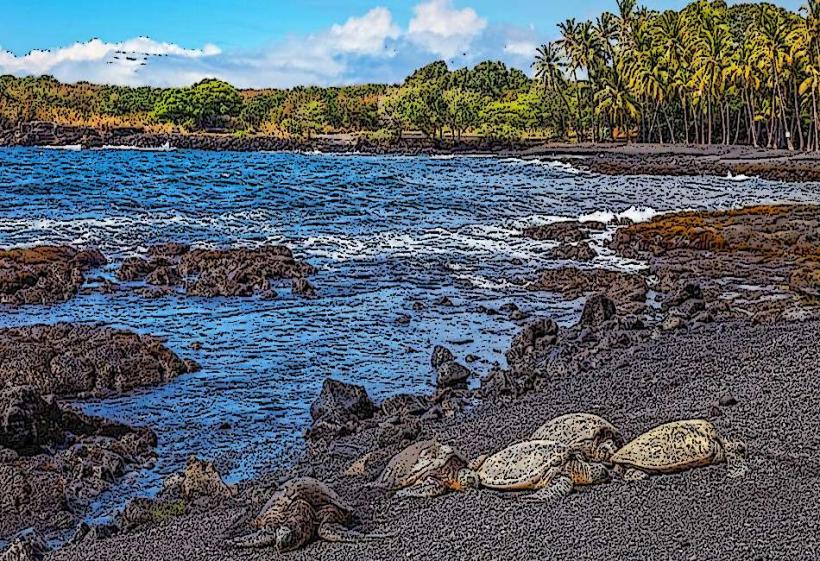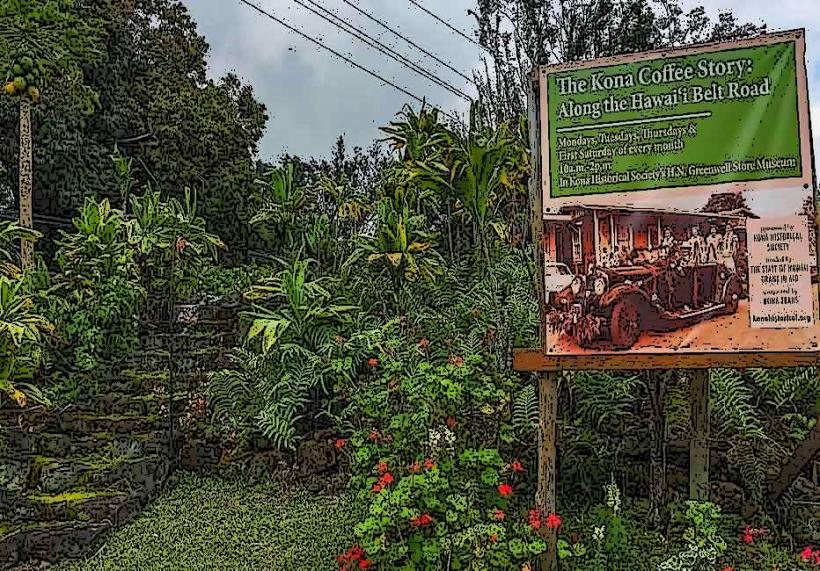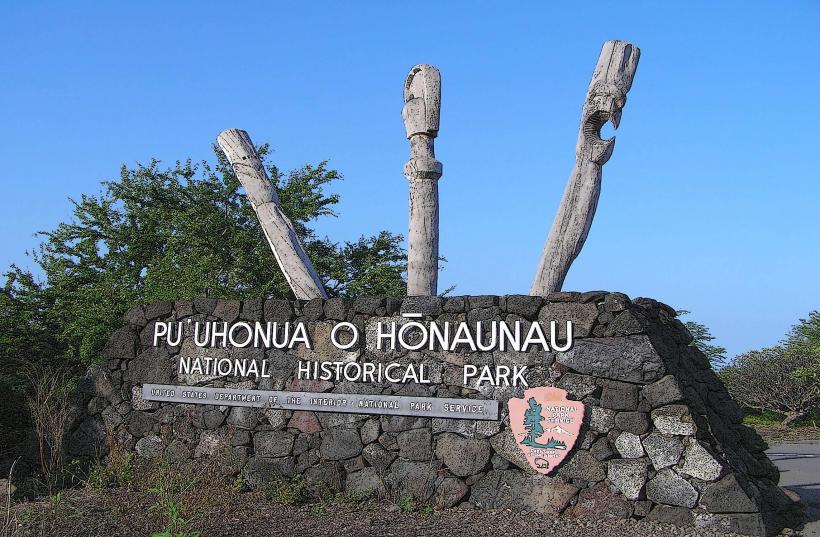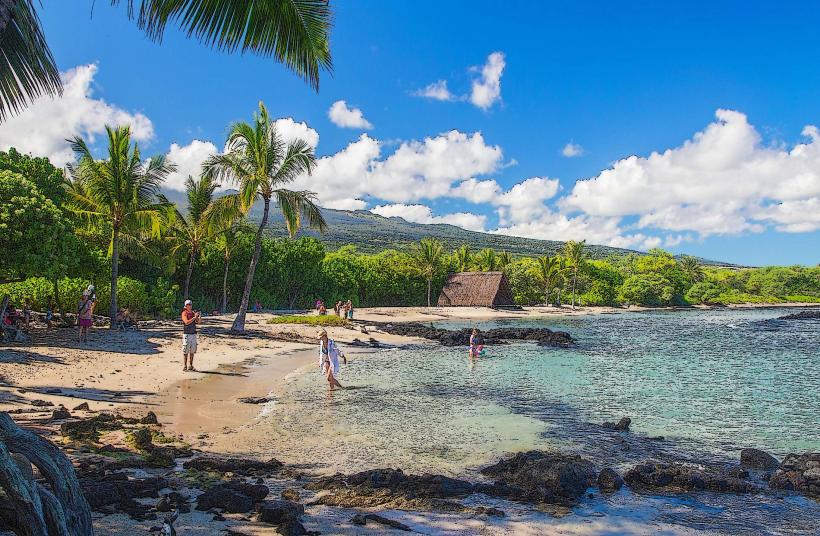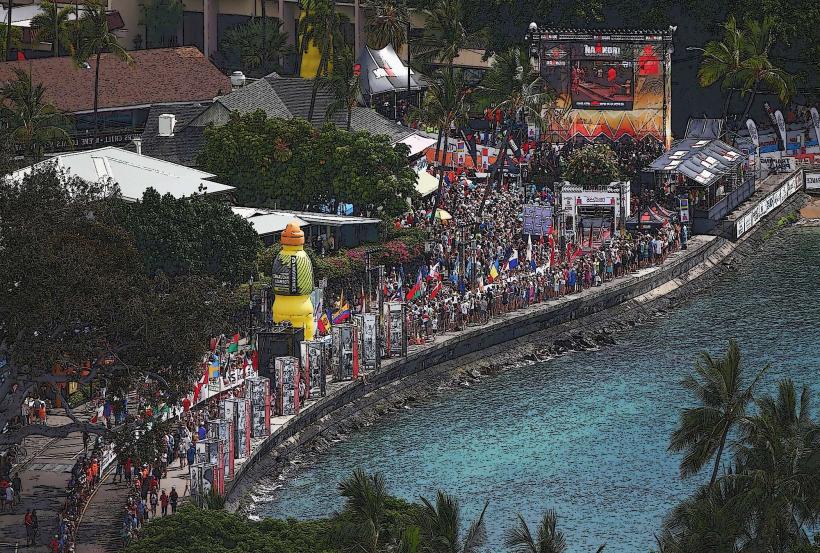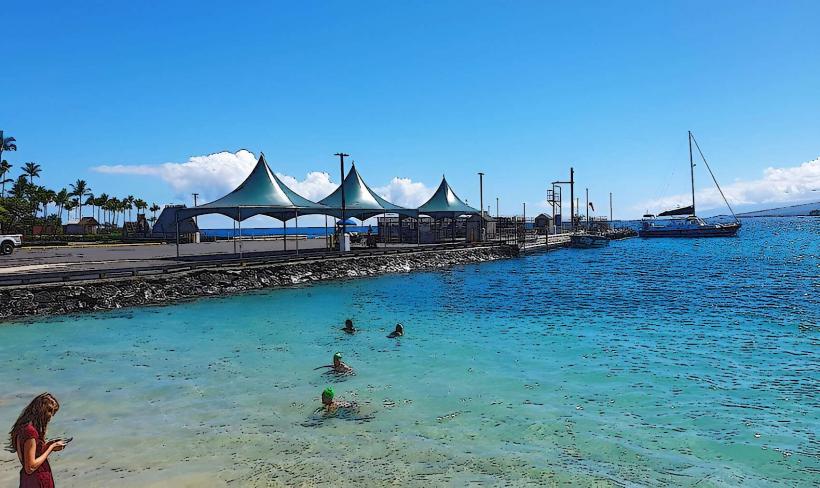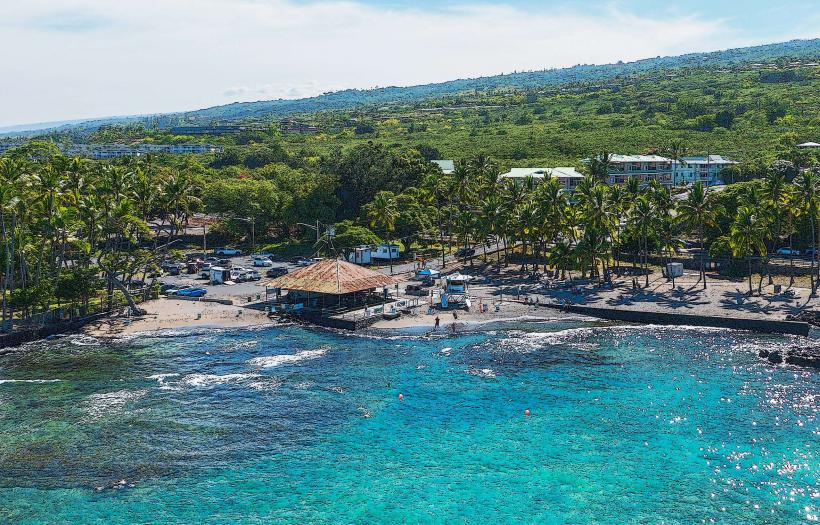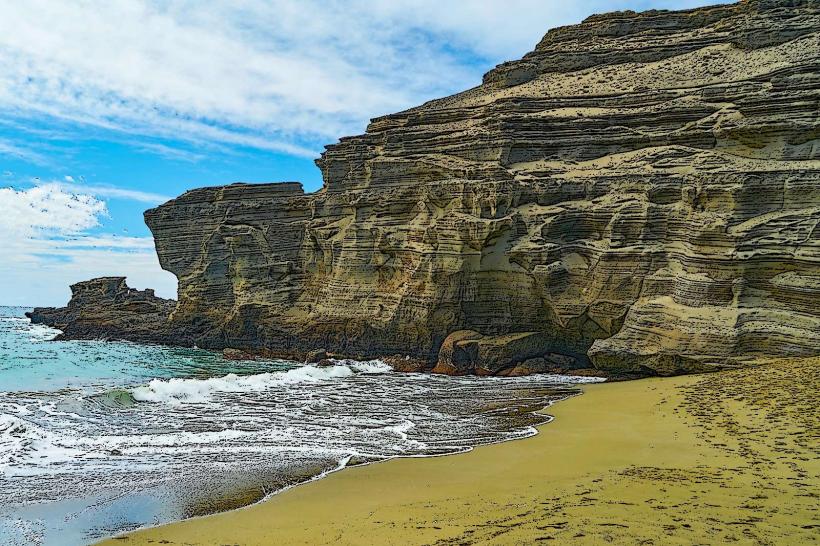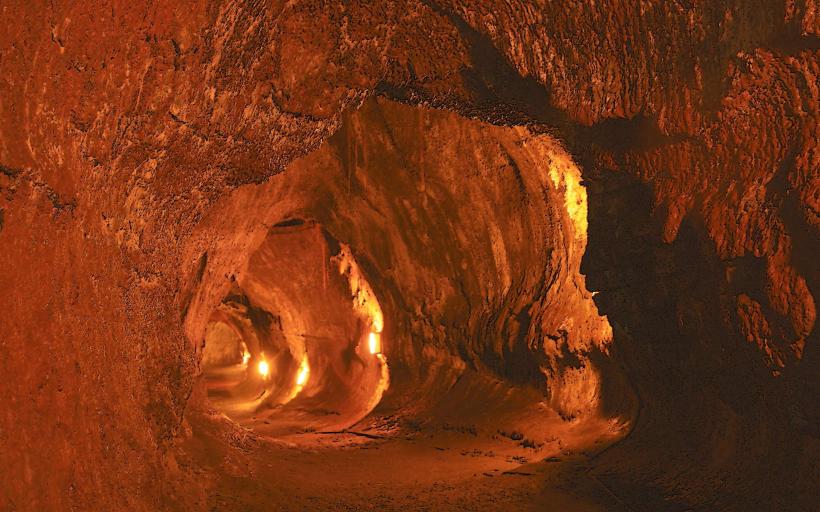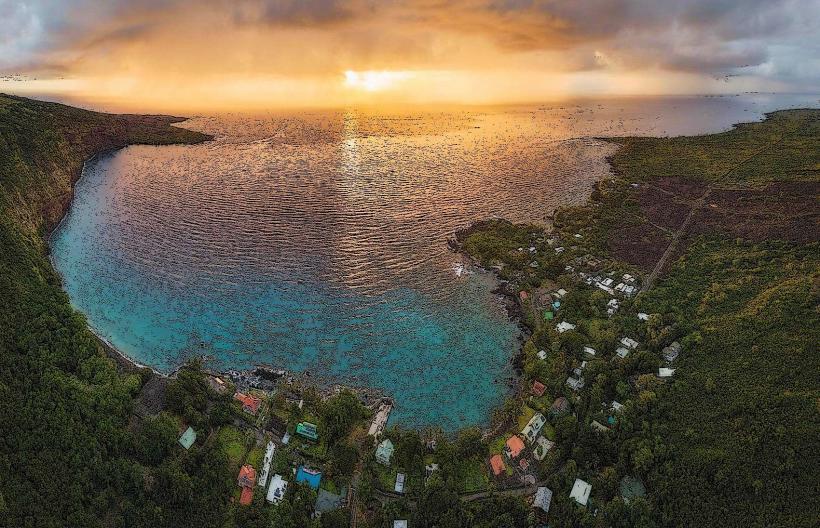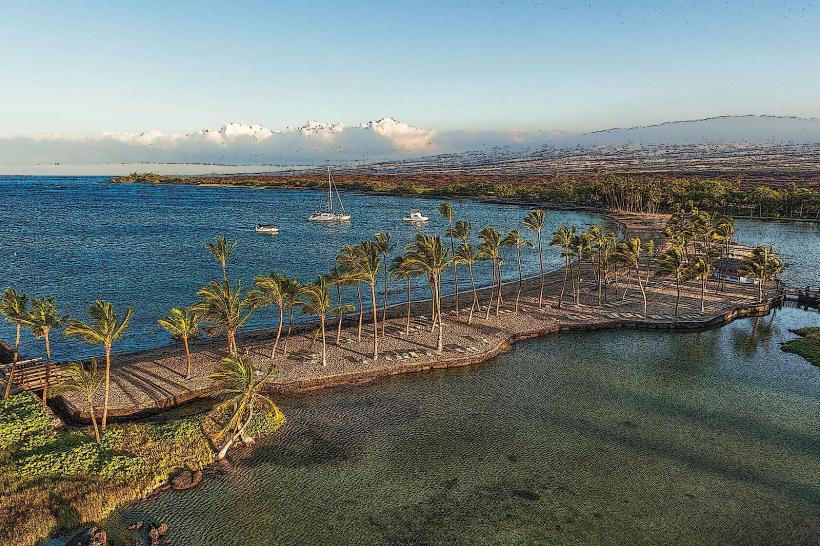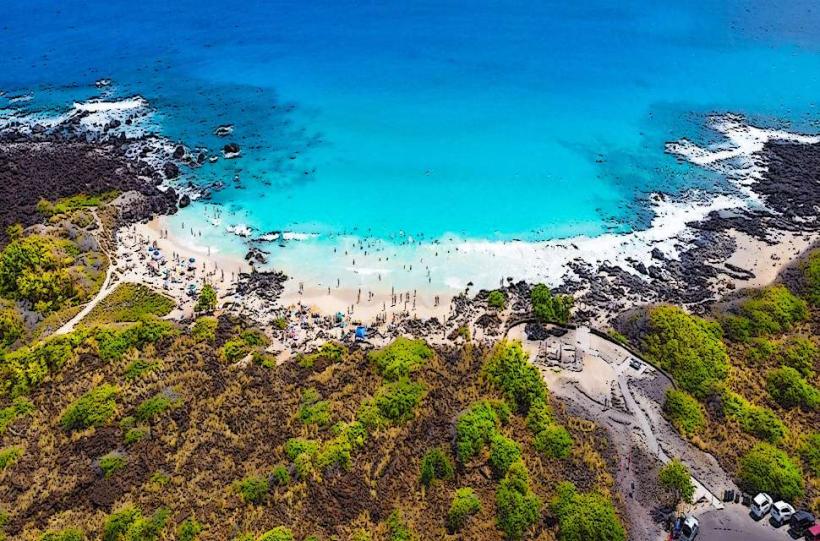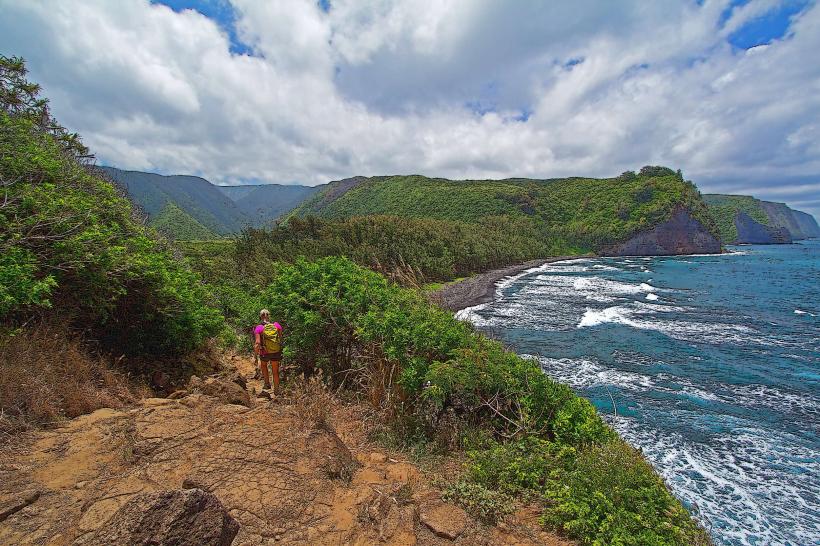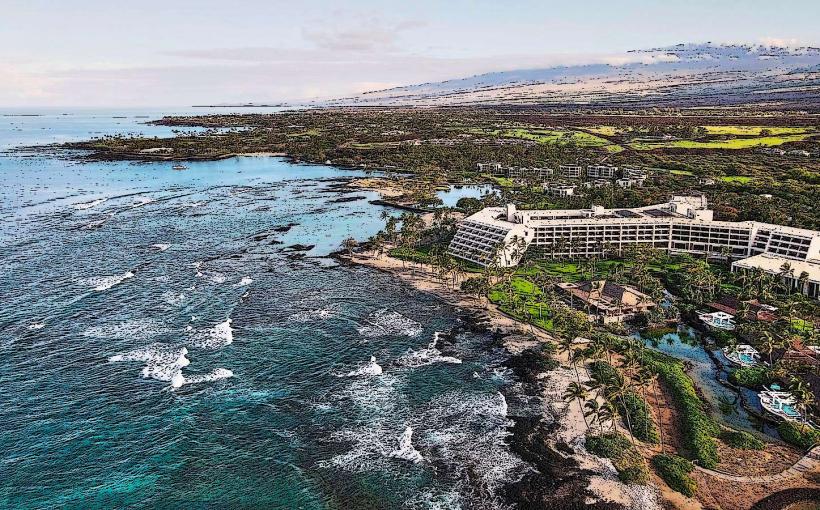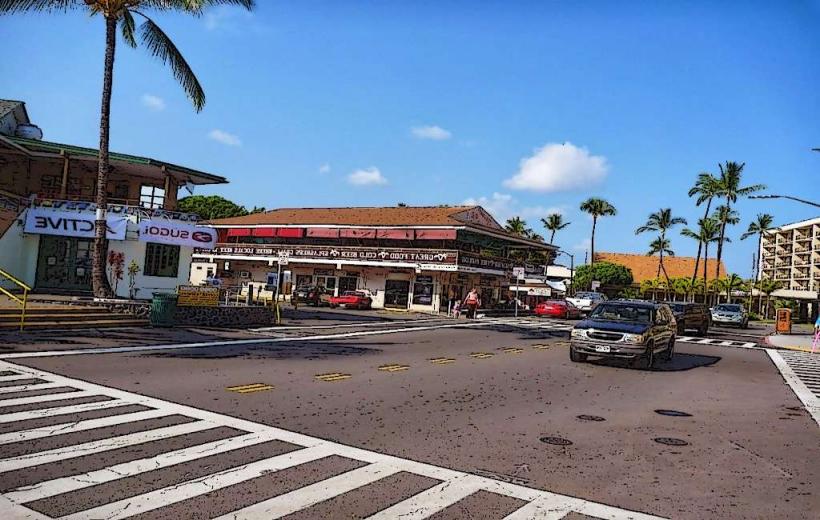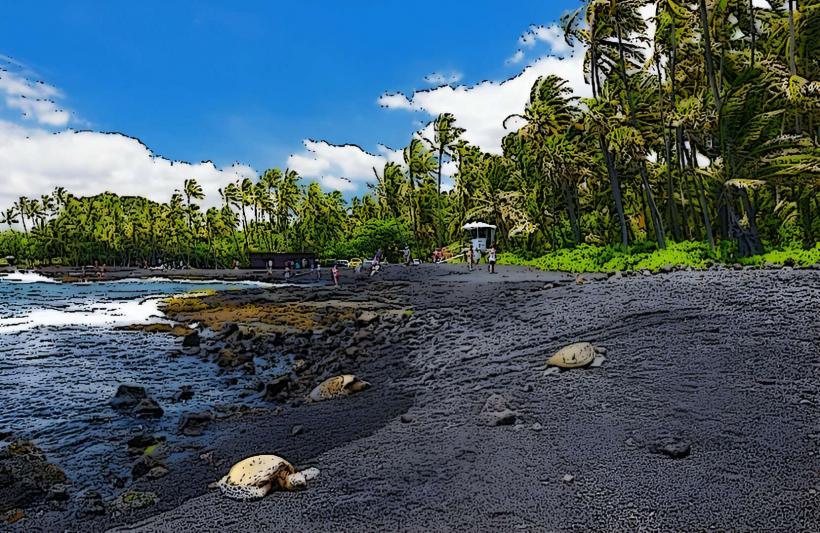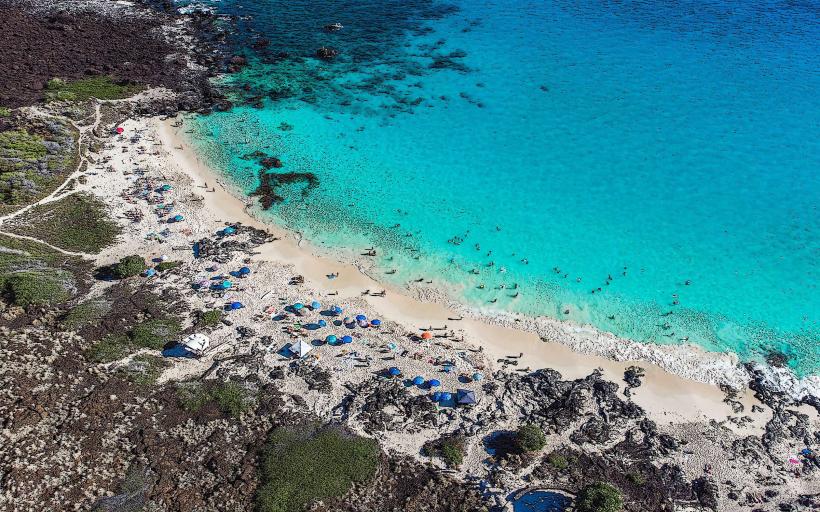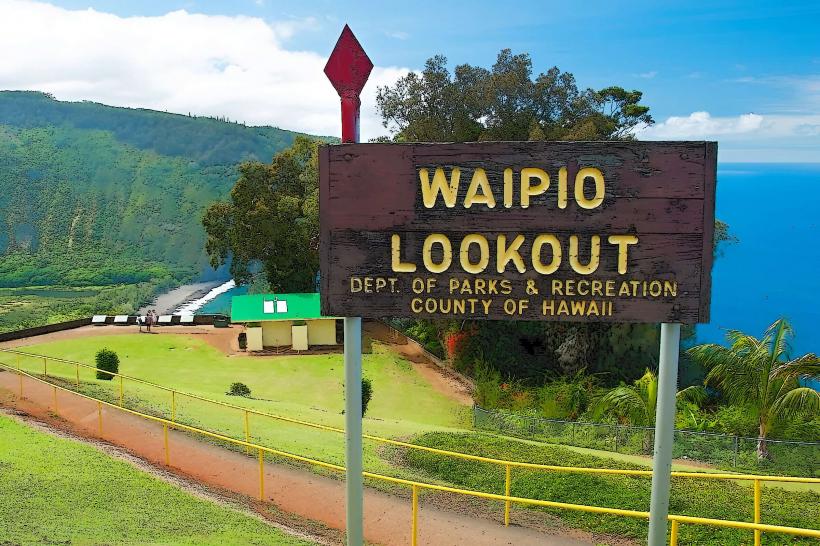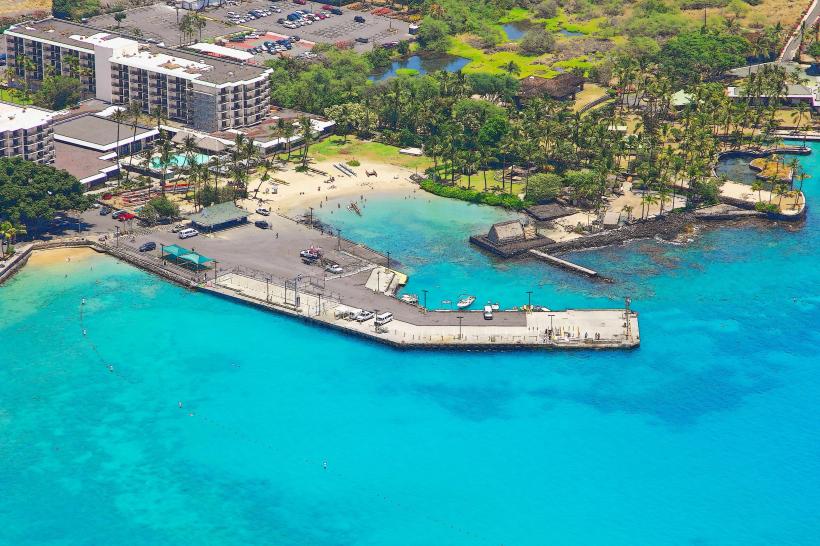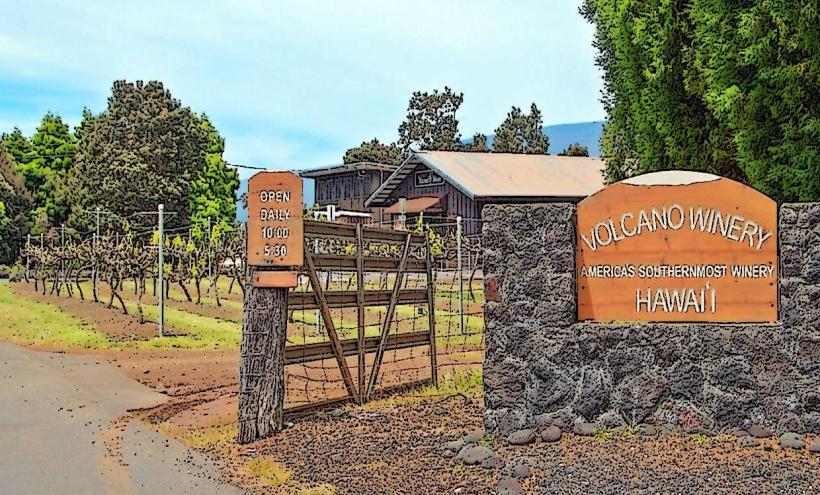Information
Landmark: Hawaii Volcanoes National ParkCity: Kailua Kona
Country: USA Hawaii
Continent: North America
Hawai'i Volcanoes National Park is one of the most popular and awe-inspiring destinations in Hawaii, located on the Big Island. The park is home to two of the world’s most active volcanoes—Kīlauea and Mauna Loa—as well as diverse ecosystems, volcanic landscapes, and rich cultural history. It is a UNESCO World Heritage Site and a prime destination for those interested in geology, nature, and Hawaiian culture.
Overview of Hawai'i Volcanoes National Park
- Location: Hawai'i Volcanoes National Park is located on the Big Island of Hawaii, in the southeastern part of the island. The park is approximately 30 miles (48 km) south of Hilo, the island's largest city.
- Size: The park spans about 333,000 acres (134,000 hectares), encompassing diverse terrain, from tropical rainforests to volcanic craters and deserts.
- Establishment: The park was established in 1916 to protect the volcanic landscapes, wildlife, and cultural resources of the region.
- Geological Features: The park is located on the Pacific Ring of Fire, an area with frequent volcanic activity. The two main volcanoes within the park—Kīlauea and Mauna Loa—are some of the most active volcanoes in the world.
Main Features of Hawai'i Volcanoes National Park
Kīlauea Volcano:
- Kīlauea is one of the most active volcanoes on Earth and a central feature of the park. It has been erupting intermittently for decades, shaping the landscape of the park and creating new lava flows and landforms.
- The Halema'uma'u Crater is a notable feature of Kīlauea, and it has seen frequent eruptions, including dramatic lava lake activity in recent years.
- Visitors can observe active lava flows, steam vents, and craters, as well as explore the Kīlauea Caldera, a massive crater formed by past eruptions.
- Crater Rim Drive provides access to several viewpoints and hiking trails around the caldera and other volcanic features.
Mauna Loa Volcano:
- Mauna Loa, one of the largest volcanoes on Earth, is another major feature of the park. It has erupted numerous times in recorded history, with its most recent eruption occurring in 2022.
- The park includes several hiking trails leading to the summit area of Mauna Loa, offering panoramic views of the surrounding landscape and the Pacific Ocean.
- Mauna Loa's summit is the highest point in Hawai'i, standing at 13,681 feet (4,170 meters), and offers stunning views of the surrounding terrain and ocean.
Kīlauea Visitor Center:
- The Kīlauea Visitor Center is located near the park entrance and is the main hub for information about the park. It offers exhibits on the park's geology, history, and cultural significance, as well as information on current volcanic activity.
- The center provides maps, brochures, and recommendations for hiking trails, along with updates on volcanic activity.
- Ranger-led Programs: Visitors can join ranger-led tours to learn more about the park’s geology, cultural heritage, and current volcanic events.
Thurston Lava Tube:
- The Thurston Lava Tube (also known as Nāhuku) is a popular and easily accessible feature of the park. This natural tunnel was formed by flowing lava, creating a unique, lush environment within the tube.
- Visitors can walk through the tube, observing the hardened lava walls and the vibrant ferns and mosses that grow in the area.
- The lava tube is just one example of the many geological formations shaped by volcanic activity in the park.
Steam Vents and Sulfur Banks:
- Steam Vents are located near the Kīlauea caldera and release steam and volcanic gases into the atmosphere. These features are a dramatic reminder of the active volcanic processes taking place beneath the surface.
- The Sulfur Banks are an area where sulfuric gases rise through the ground, creating colorful, mineral-rich deposits. The area is named for the strong sulfur smell that emanates from the vents.
Chain of Craters Road:
- Chain of Craters Road is a scenic route that runs through the park, offering spectacular views of the volcanic landscape and numerous craters.
- Along the road, visitors can see dramatic volcanic features, including large craters, lava fields, and coastline views. The road leads to the end of the road, where the road is often covered by recent lava flows.
- There are several scenic stops along the route, including Pū‘u Loa Petroglyphs, which features thousands of ancient Hawaiian petroglyphs carved into the volcanic rock.
Hiking Trails:
- Hawai'i Volcanoes National Park offers a variety of hiking trails for all levels of hikers, from short walks to more challenging treks.
- Some popular trails include the Kīlauea Iki Trail, a 4-mile (6.4 km) loop that takes hikers through a crater and a lush rainforest, and the Devastation Trail, which offers a short walk through a landscape shaped by the 1959 eruption of Kīlauea.
- Puʻu Huluhulu Trail offers views of Mauna Loa and Kīlauea, as well as the surrounding lava fields.
Cultural Sites:
- The park is also rich in Hawaiian cultural sites, including historic trails and sacred areas used by ancient Hawaiians for rituals and spiritual practices.
- The park includes petroglyphs, heiau (Hawaiian temples), and other important archaeological sites that reflect the deep cultural ties between the land and the Hawaiian people.
- Nāhuku (Thurston Lava Tube) is a site that offers insights into Hawaiian mythology and the significance of volcanic landscapes in traditional beliefs.
Nene (Hawaiian Goose) and Other Wildlife:
- Hawai'i Volcanoes National Park is home to the Nene, the state bird of Hawaii, which is an endangered species. Visitors may spot Nene grazing in the park's meadows or resting along hiking trails.
- The park is also home to a variety of other wildlife, including Hawaiian short-eared owls, honu (Hawaiian green sea turtles), and several species of endemic plants.
Activities and Things to Do
- Volcano Watching: Witness the beauty of an active volcano, particularly the dramatic volcanic landscapes, lava flows, and steam vents.
- Hiking: Explore the park’s extensive network of trails, including those that take you through craters, lava tubes, and lush forests.
- Photography: Capture stunning landscapes, including volcanic craters, lava fields, tropical rainforests, and wildlife.
- Ranger-Led Programs: Participate in ranger-led tours or educational talks to learn about the park’s geology, history, and cultural significance.
- Stargazing: Due to its remote location, the park offers excellent opportunities for stargazing, with clear skies and minimal light pollution.
- Wildlife Viewing: Spot native birds like the Nene and other wildlife, including endemic plants and animals.
Access and Facilities
- Entrance Fees: Hawai'i Volcanoes National Park charges an entrance fee, which is typically valid for 7 days. There may also be annual passes available.
- Visitor Centers: The Kīlauea Visitor Center and Mauna Loa Summit Visitor Center are the main points of information and provide maps, brochures, and advice on current volcanic activity.
- Restrooms: Restrooms are available at the visitor centers and at several trailheads and scenic stops within the park.
- Accommodations: The park offers a variety of accommodations, including Volcano House, a historic hotel located near the Kīlauea crater. There are also campgrounds for those wishing to stay overnight.
- Dining: The Volcano House has a restaurant offering food and drinks with views of Kīlauea, and there are other options in nearby towns such as Volcano Village.
Best Time to Visit
- The park is open year-round, and the volcanic activity can vary. Visitors should check for current volcanic conditions before visiting, as activity levels may affect accessibility to certain areas.
- The dry season (April to October) is the best time to visit for clear weather and ease of access to trails, although the park is spectacular during all seasons.
- Winter months (November to March) are cooler, and visitors may have the opportunity to see snow on Mauna Loa or Mauna Kea.
Conclusion
Hawai'i Volcanoes National Park is a must-see destination for anyone visiting the Big Island of Hawaii. It offers a unique combination of active geological features, cultural significance, and breathtaking natural beauty. Whether you’re a geology enthusiast, a nature lover, or someone interested in Hawaiian history, the park provides a fascinating experience. The ever-changing landscapes and volcanic activity make it a dynamic and unforgettable destination for visitors of all ages.

